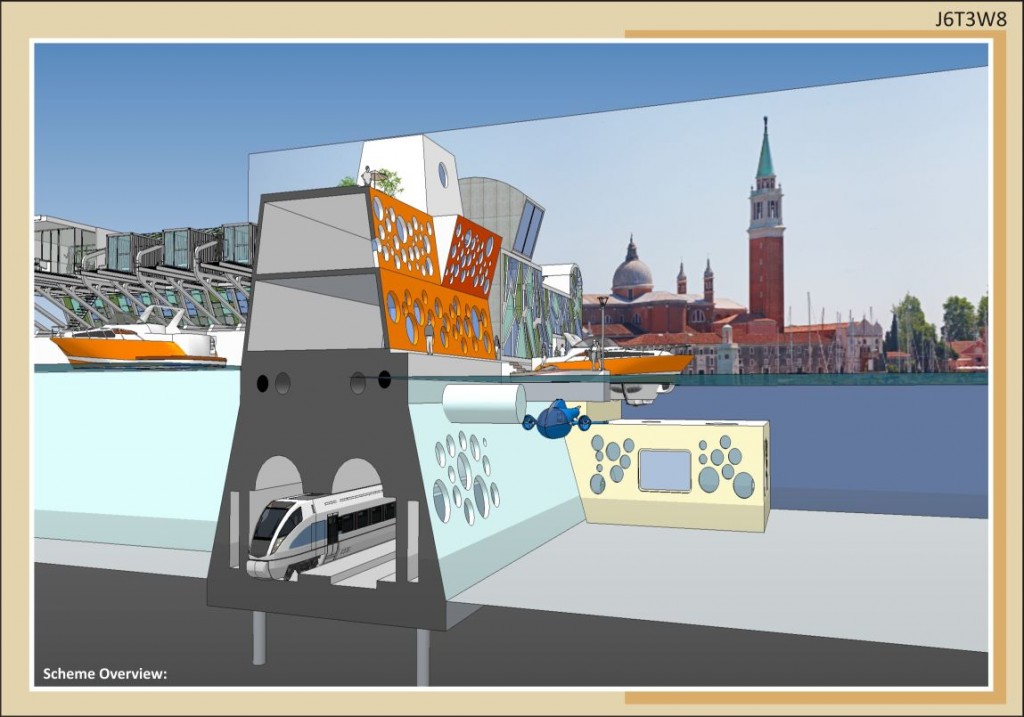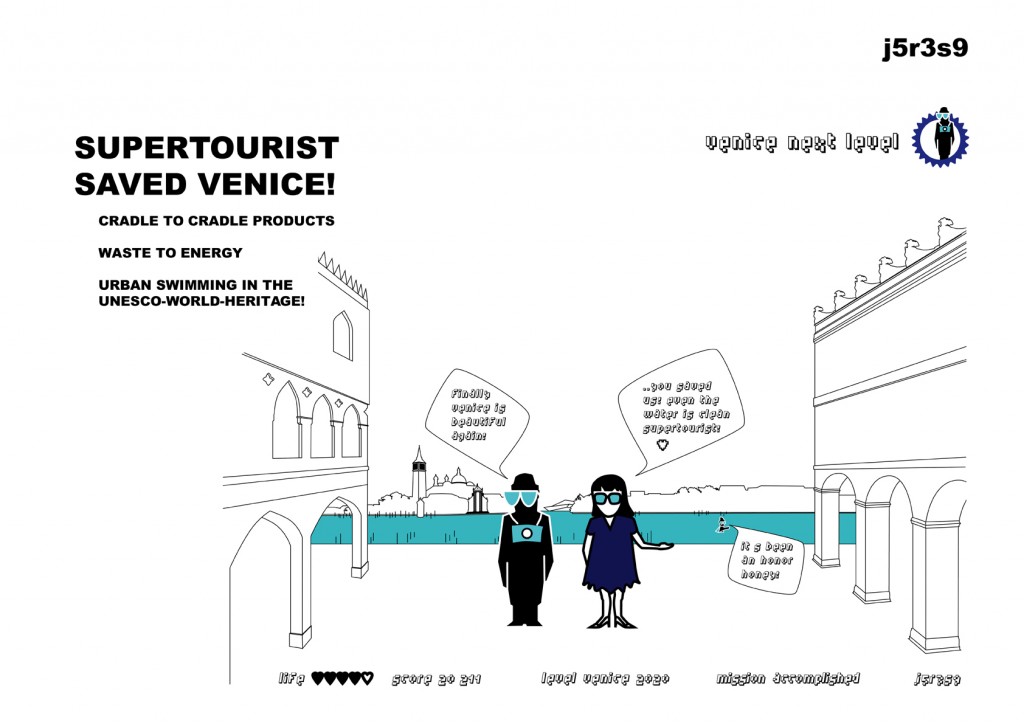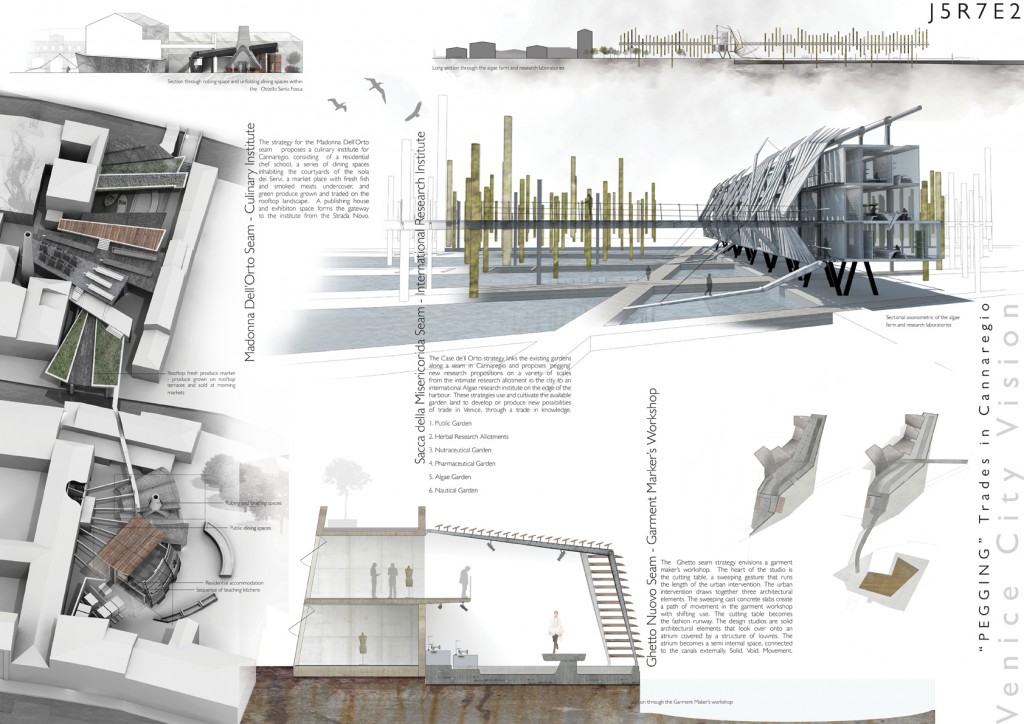Info:
Title: Urban Pegs - Code: J5R7E2Contest: Venice / 2011
By: C. Gardiner / A. Piggott / M. Tevendale
Views: 3884 Likes: 0
Votes:
BJARKE INGELS9 NERI OXMAN9 ELENA MANFERDINI6 MARIA LUDOVICA TRAMONTIN4 BOSTJAN VUGA46.4
Urban Pegs
Pegs are a strategy for locking in to an existing condition, responding to qualities of a site with reactive fragments which create new tectonic qualities through actions such as clamp, suspend, pinch, pull, wedge, embed, compress, screw. The Peg as a moment in a line or path within a territory has been tested firstly as a series of individual interventions and secondly as a wider urban strategy for Venice.
Cannaregio functions with a limited number of layers of urban use, based on domestic routines and small scale industry and trade. There is also an identified threshold between the Guest (visitor) and the Host (inhabitant) just North of the Strada Nova. The pressure on this threshold is building due to the amassing tourism throughout Venice. Considering this we have developed three seams that create valves which adjust and influence new urban dynamics through the territory.
Seam 1 – Case dell’Orto
The Case dell’Orto strategy creates links between the existing gardens and seemingly insignificant green spaces along a seam in Cannaregio, stretching from the Strada Nova to the Sacca Della Misericordia harbour and out into the lagoon. It proposes ‘pegging’ six new research propositions on a variety of scales along the seam, which use and cultivate the garden spaces . The strategy presented is the Algae Garden, which is an international Algae research institute. The programme researches methods of using the Venetian lagoon water to grow and cultivate algae on a smaller scale, to inform potential larger scale production of Biodiesel and Biomass to help sustain Venice’s trade in the future.
Seam 2 – Istituto dei Arte Culinaia di Cannaregio
This study for intervention along the Madonna dell’Orto seam responds to a growing reputation for the cuisine of Cannaregio and proposes a series of spaces designed to promote and develop the Venetian art of cookery. A series of spaces are ‘pegged’ into the existing city fabric, incorporating teaching kitchens and residential accommodation; dining spaces which unfold to inhabit courtyards and open space; a market trading fish and cured meats in a covered space and fruit and vegetables on the rooftop; a publishing house and linguistic institute to teach the language of the kitchen and clusters of restaurants and bistros which would establish themselves around the institute and market.
Seam 3 – The Garment Maker’s Workshop
The Ghetto seam strategy envisions a garment maker’s workshop. The heart of the studio is the cutting table, a sweeping gesture that runs the length of the urban intervention. The urban intervention draws together three architectural elements. The sweeping cast concrete slabs create a path of movement in the garment workshop with shifting use. The cutting table becomes the fashion runway. The design studios are solid architectural elements that look over onto an atrium covered by a structure of louvres. The atrium becomes a semi internal space, connected to the canals externally. Solid. Void. Movement.
Info:
Title: Urban Pegs
Time: 7 giugno 2011
Category: Venice
Views: 3884 Likes: 0
Tags: A. Piggott , C. Gardiner , Cannaregio , Glossary of chess , M. Tevendale , Social Sciences , Urban and Regional Planning , Urban Interventionism , Venetian Lagoon , Veneto , Venice








